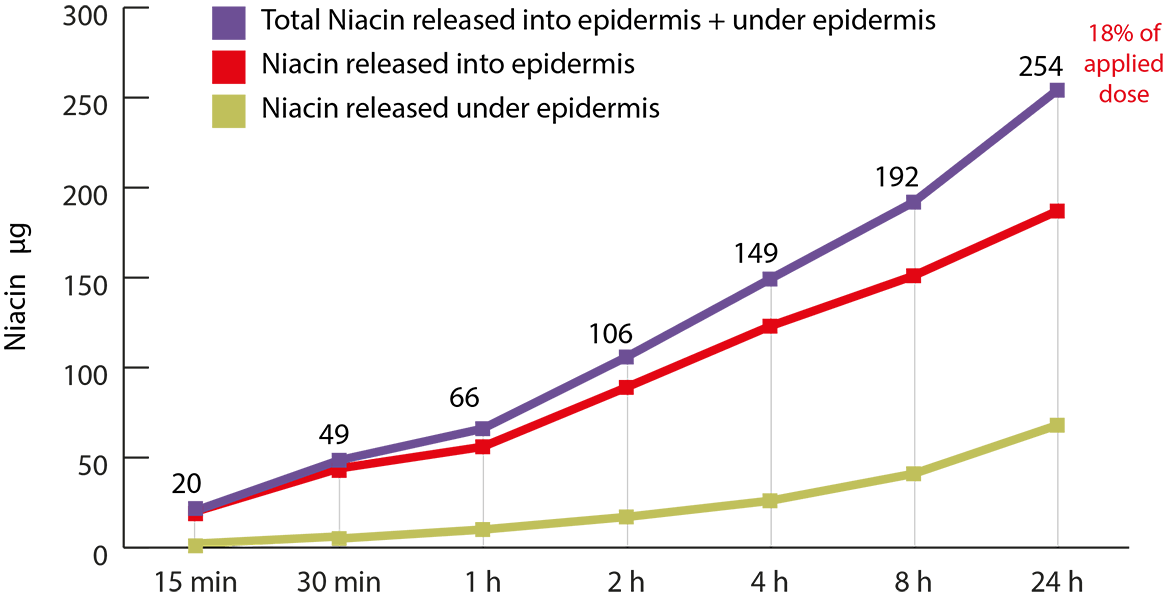Skin Penetration Study Protocol: this test method has been designed to provide information on absorption of a test substance applied to the surface of a skin sample separating the two chambers (a donor chamber and a receptor chamber) of a diffusion cell. In vivo viable human skin has been used. The skin has been shown to have the capability to metabolize some chemicals during percutaneous absorption. In this case, metabolites of the test chemical in the epidermis and under epidermis may be analyzed by appropriate methods. A quantity of 3000 µg of Nicomenthyl 20 (in Caprylic Capric Triglyceride) is applied to a 0.5 cm2 surface of RHE (i.e. equivalent to an exposure of 6000 µg/cm2 of the test substance). Temperature must be kept constant throughout the whole test. The absorption of Nicomenthyl 20 during a given time period (24h) is measured by HPLC analysis of the receptor fluid. Furthermore, the distribution of Nicomenthyl 20 and its main metabolite (Niacin) in the test system and their absorption profiles are presented in appropriate graphic formats at intervals of 15 min, 30 min, 1h, 2h, 4h, 8h, 24 h after application.
NICOMENTHYL 20 SKIN ABSORPTION IN VITRO STUDY
A quantity of 3000 μg of Nicomenthyl 20 was applied to a sample of RHE (in vitro Reconstructed Human Epidermis). A very high rate of penetration through the stratum corneum was observed, reaching an amount of 53.8% of the applied dose in only 30 minutes. The whole process of absorption and hydrolysis into its two components, Menthol and Niacin, gets practically completed in a period of 24 hours after application.
The Niacin so released gets immediately distributed both in the epidermis and under the epidermis.
YOUR SKIN NEEDS NIACIN – NICOMENTHYL 20 PROVIDES IT !

HPLC analysis revealed a total amount of 254 μg of released Niacin having penetrated the skin barrier (from the initial 1413 μg contained in the 3000 μg applied dose of Nicomenthyl 20), i.e. a Niacin absorption rate of approx. 18% of the applied dose in 24 hours. These results are very significant, especially if compared to the absorption rate of the commonly used Nicotinamide (another form of Vit. B3), which is only 11% of the applied dose in 120 hours (i.e. 2.2% in 24 hours); or to the absorption rate of pure Niacin itself, which is less than 1% of the applied dose in 120 hours (i.e. less than 0.2% in 24 hours).*
*Cfr.: ABSORPTION OF SOME ORGANIC COMPOUNDS THROUGH THE SKIN IN MAN - Robert J. Feldmann, Howard J. Maibach.
The Journal of Investigative Dermatology – © 1970 The Williams & Wilkins Co.
English translation of Cosmetic Technology article (march/april 2019): Menthyl Nicotinate - High rate of skin absorption and time-release delivery of Vitamin B3 (Niacin)